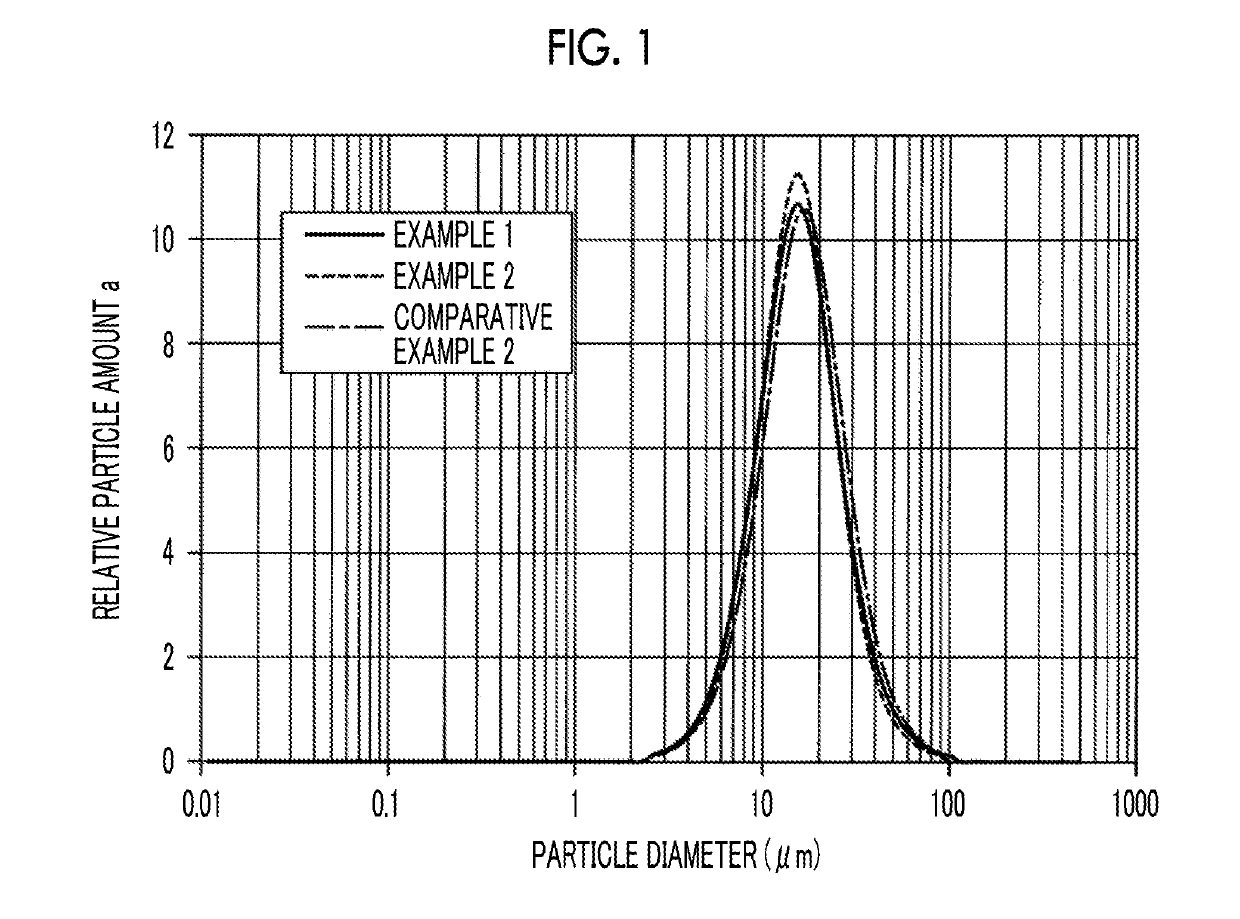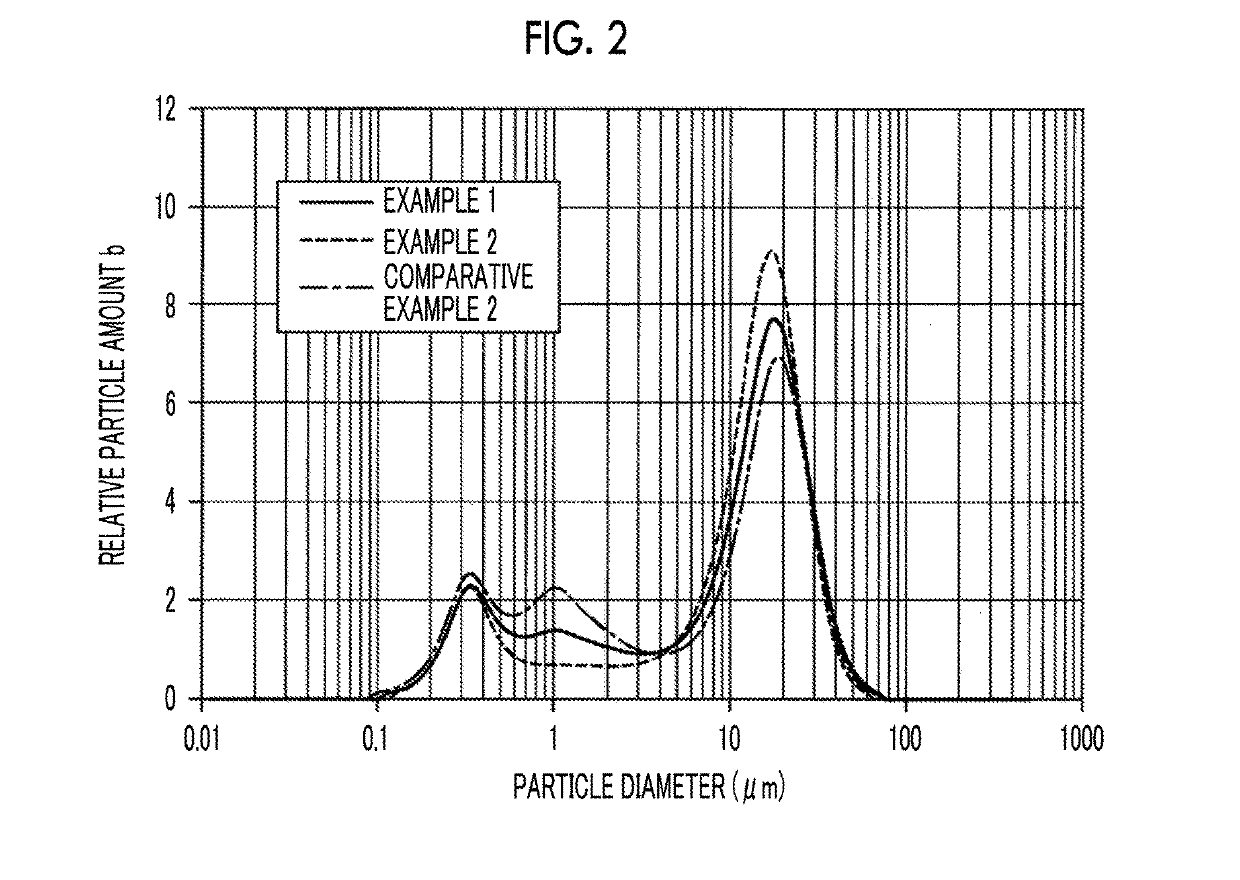Cathode material for lithium-ion secondary battery and method for manufacturing the same, cathode for lithium-ion secondary battery, and lithium-ion secondary battery
a lithium-ion secondary battery and cathode material technology, applied in the direction of batteries, cell components, electrochemical generators, etc., can solve the problems of deformation of the rate characteristics and deformation of the conductivity, and achieve excellent rate characteristics and high electron conductivity in the electrode
- Summary
- Abstract
- Description
- Claims
- Application Information
AI Technical Summary
Benefits of technology
Problems solved by technology
Method used
Image
Examples
example 1
[0132]Synthesis of Cathode Material for Lithium-Ion Secondary Battery
[0133]Lithium phosphate (Li3PO4) (2 mol) and iron (II) sulfate (FeSO4) (2 mol) were added to and mixed with water so that the total amount reached 4 L, thereby preparing a homogeneous slurry-form mixture.
[0134]Next, this mixture was stored in a pressure-resistant airtight container having a capacity of 8 L and was hydrothermally synthesized at 200° C. for six hours, thereby generating a precipitate of a cathode active material.
[0135]Next, this precipitate was cleaned with water, thereby obtaining a cake-form cathode active material.
[0136]Next, a polyethylene glycol (4.5 g) as an organic compound and pure water were added to this cathode active material (150 g in terms of solid content), and a dispersion treatment was carried out on the mixture using zirconia balls having a diameter of 0.1 mm as medium particles in a sand mill. At this time, the amount of the pure water was adjusted so that the proportion of the mas...
example 2
[0146]A cathode material 2 of Example 2 was obtained in the same manner as in Example 1 except for the fact that the median diameter in the particle size distribution of the dispersed slurry after the sand milling was adjusted to 131 nm, and a point in time at which the median diameter (nm) / crystallite diameter (nm) which was calculated from the crystallite diameter before the sand milling of 123 nm reached 1.07 was considered as the ending point of the sand milling.
[0147]A lithium-ion secondary battery 2 of Example 2 was produced in the same manner as in Example 1 except for the fact that the cathode material 2 was used.
example 3
[0148]A cathode material 3 of Example 3 was obtained in the same manner as in Example 1 except for the fact that the median diameter in the particle size distribution of the dispersed slurry after the sand milling was adjusted to 127 nm, and a point in time at which the median diameter (nm) / crystallite diameter (nm) which was calculated from the crystallite diameter before the sand milling of 123 nm reached 1.03 was considered as the ending point of the sand milling.
[0149]A lithium-ion secondary battery 3 of Example 3 was produced in the same manner as in Example 1 except for the fact that the cathode material 3 was used.
PUM
 Login to View More
Login to View More Abstract
Description
Claims
Application Information
 Login to View More
Login to View More - R&D Engineer
- R&D Manager
- IP Professional
- Industry Leading Data Capabilities
- Powerful AI technology
- Patent DNA Extraction
Browse by: Latest US Patents, China's latest patents, Technical Efficacy Thesaurus, Application Domain, Technology Topic, Popular Technical Reports.
© 2024 PatSnap. All rights reserved.Legal|Privacy policy|Modern Slavery Act Transparency Statement|Sitemap|About US| Contact US: help@patsnap.com









